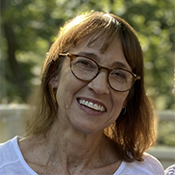 By former Lay Minister for Caring & Wellness Linda Clark
By former Lay Minister for Caring & Wellness Linda Clark
“U.S. life expectancy continued to drop in 2021. Decline in U.S. life expectancy was greater than for peer countries in 2020 and again in 2021.” This recent headline in The Washington Post grabbed my attention. “The life expectancy gap between the U.S. and its peer countries is now over five years,” according to Laudan Aron, senior fellow at the Urban Institute. Why has the U.S. failed to keep pace with the life expectancy of other Westernized countries? Yes, COVID plays a big part in these staggering statistics, along with resistance among many to be vaccinated. Other factors play a part in this decline: social, economic, medical and political factors and the opioid crisis, for example. Disheartening statistics indeed. Yes, there is much to be done to restore the health of our nation. We need to change our culture of impoverishment, racial discrimination, access to health care and reduce our carbon footprint. Still, I had to ask, “What are other countries doing to prolong life that we are not?” Enter … The Blue Zones!
You may be familiar with Dan Buettner’s popular book “The Blue Zones,” a study of places around the world where a large percentage of people live to be at least 100 years old. These centenarians don’t suffer from the common degenerative diseases found in other parts of the industrialized world. Buettner visited these zones and studied the lifestyles of the people there. It isn’t surprising to learn that these “senior” seniors do not have miracle drugs, potions or superpowered medical practitioners. Instead, they have common denominators that contribute to their longevity. They have the Power 9!
The Power 9
Though they lived in various corners of the world, Buettner learned these hardy souls had things in common that improved their health and ability to remain vibrant, contributing members of their societies. These are the lifestyle habits of the world’s longest-living people:
- Move Naturally. Make physical activity (e.g., walking or gardening) a part of your daily routine so you don’t have to think about “getting” exercise. There’s no need for intensive workouts.
- 80% Rule. Stop eating when you’re 80% full. The 20% difference can help maintain good health.
- Plant Slant. Eat more beans, vegetables, fruits and whole grains. Meat should be consumed in small amounts, if at all.
- Wine Consumption. Drink one to two glasses of red wine daily with meals and/or friends. (Obviously this is not healthy for everyone.)
- Purpose. Have a purpose in life. It makes you happier, healthier and helps you live longer.
- Down Shift. Build stress-relieving rituals into your routine so your body can recover.
- Belong. Be part of a spiritual community to improve your well-being and life expectancy.
- Loved Ones First. Make family a priority. Invest in your children so they may reciprocate your love and care.
- Right Tribe. Be surrounded by close friends and people who’ll reinforce your Blue Zone values and habits.
The diet and health industries would like us to believe we can become healthier and live longer by taking specific pills or supplements and doing the “right” kind of exercise or training program. Instead, we can improve our own longevity by supporting an ecosystem of community, purpose and faith. How can we each integrate these nine elements into our own lives? Some elements on this list require more work than others. Some may already be a part of your lifestyle. Adding more over time could make a big difference.
If you’re curious about where these magic Blue Zones exist, check out this article in TIME. Unfortunately, only one of them is in the United States. Can you guess where? Hint: Think West Coast.
